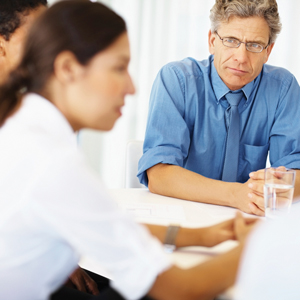 Sitting through lengthy meetings or workshops. Enjoying a live performance at a local venue (like last month’s Les Miserables at the Landmark). Going on long trips. Just reading these examples might cause concern among those struggling with incontinence. What if you have an accident? Or you can’t find a bathroom when you need it? Suppose you need to visit a bathroom frequently? Many people have built-in excuses for bathroom breaks during long meetings, or simply avoid shows or travel completely because of these fears. But there are ways to make these situations more manageable and more fun for people with incontinence.
Sitting through lengthy meetings or workshops. Enjoying a live performance at a local venue (like last month’s Les Miserables at the Landmark). Going on long trips. Just reading these examples might cause concern among those struggling with incontinence. What if you have an accident? Or you can’t find a bathroom when you need it? Suppose you need to visit a bathroom frequently? Many people have built-in excuses for bathroom breaks during long meetings, or simply avoid shows or travel completely because of these fears. But there are ways to make these situations more manageable and more fun for people with incontinence.
There are a number of causes of incontinence, each with its own specific treatment, but whatever the cause, incontinence is undoubtedly more common as we age.
Stress urinary incontinence is the most Common form in women and is due to relaxation of the muscles supporting the bladder. When the pressure inside the abdomen increases, as with sneezing, coughing, laughing, or exercising, leakage may occur, usually in little spurts.
What’s referred to as urge incontinence – when you have to find a bathroom, immediately! – is caused by an overactive bladder muscle. This can happen in men or women, and while it’s a little more common in people with other issues associated with aging – like diabetes, Parkinson’s or stroke – it can happen in even the healthiest of seniors.
Then there’s overflow incontinence. Men with enlarged prostate glands may hear this term during an office visit. The urine flow can be blocked and when the bladder gets completely filled, leakage will occur.
Treatment for urinary incontinence is based on individual patient needs and the cause of the condition, but they do fall into several categories: bladder training, medications, and, in some cases, surgery.
You can engage in bladder training. For starters, go to the bathroom whenever you have the chance, even if you don’t feel the urge. Timed voiding every two hours can help prevent accidents. Also, Kegel muscle exercises (tightly squeezing and then relaxing the muscles that stop urine flow) can help with control as the muscles get stronger. Because no one knows you’re doing them, you can exercise at your desk, in your car, or anywhere.
There are various treatment choices that may help with bladder over-activity. Medicines called bladder relaxants can help moderate frequent urges. There is a brand new class of medications called beta-3 agonists that can help with over-activity as well. Nerve stimulation can also help with especially difficult to control cases. This technology is similar to that of a pacemaker.
Ultimately, surgery may be the best treatment for some patients.
Most urological procedures are performed with minimally-invasive techniques, meaning tiny incisions or no incisions at all. The DaVinci robotic surgery system – which we have pioneered in urological surgery – is the latest innovation in safety and comfort.
There are practical steps to consider when you’re living with incontinence. In preparation for longer meetings, take care to limit your fluid intake, but be sure not to get dehydrated. While traveling, bring adequate supplies and put clean underwear and plastic bags in a carry-on. Request an aisle seat near a lavatory if you are flying or taking the train.
Don’t despair, and definitely don’t plan to skip meetings or shows, or forego traveling in the coming months. Identifying the specific problem and choosing the correct treatment plan are the keys to resolving this issue for good.




